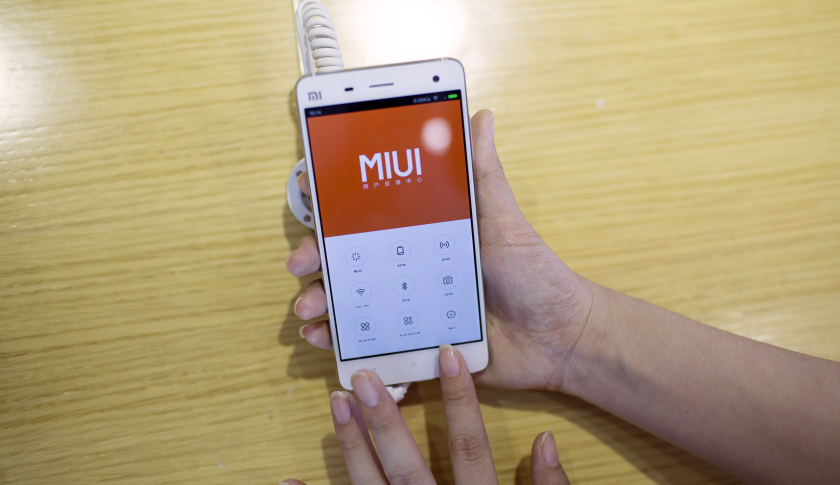(单词翻译:单击)
News that India’s High Court of Delhi issued an injunction against Chinese smartphone upstart Xiaomi was a reminder of how much Chinese smartphone makers still have to grow. It was not, however, an indication that the Chinese can’t grow into international brands.
印度德里高等法院下达针对中国智能手机新贵小米公司(Xiaomi)的一项禁令,这则消息提醒了我们,中国智能手机制造商还有多长的路要走。不过,这并不意味着中国手机无法成长为国际品牌。

The Swedish telecom giant Ericsson filed suit in India complaining that Xiaomi did not pay royalties on its wireless technology patents. The court agreed and instructed Xiaomi to stop selling and importing in the country until February, when the court hears the case.
瑞典电讯巨头爱立信(Ericsson)在印度将小米告上法庭,理由是小米使用了爱立信的无线科技专利却没有支付专利费。法院方面已经通过了爱立信提交的申请,并宣布在明年二月开庭审理之前禁止小米在印度销售和进口智能手机。
“Ericsson’s commitment to the global support of technology and innovation is undisputed. It is unfair for Xiaomi to benefit from our substantial R&D investment without paying a reasonable licensee fee for our technology,” Ericsson said in a statement.
爱立信发言人在一份声明中表示,“爱立信一直致力于全球范围内的科技发展和创新,这一点是毫无争议的。小米使用了我们大量的科研成果,却没有支付合理的技术授权费用,这是不公平的。”
Xiaomi had been on a roll in India. In October Xiaomi said it sold 40,000 phones in just four seconds in an online flash sale. Hugo Barra, vice president of Xiaomi global, said in a posting on Google Plus today the company had 150,000 registrations for its Redmi Note on the e-commerce site Flipkart just as the injunction came down.
小米手机在印度的发展势头如火如荼。10月份时该公司曾宣称,在一次网上限时抢购活动中,开售仅4秒钟就有4万台手机售出。12月12日,小米全球副总裁雨果o巴拉在社交网站Google+上表示,就在禁令下达时,公司通过电子商务网站Flipkart收到了15万份红米Note手机的订购单。
That momentum is halted for now, but not quashed. Patent disputes in the smartphone industry are as common as hot specs on a new phone. The litigious history of Apple and Samsung, which included injunctions before the two sides agreed to a ceasefire, is but one example. According to Ericsson, Xiaomi had been unresponsive during three years of attempts by the Swedish company to get compensation for its standard essential patents (those essential in connecting a phone to a wireless standard) for GSM, EDGE, and UMTS/WCDMA standards. A Xiaomi spokeswoman did not respond to a request for comment.
虽然小米的发展势头被暂时遏止,但并不意味着就此偃旗息鼓。专利纠纷在智能手机业内相当常见,和新款手机的热门配置一样层出不穷。苹果(Apple)和三星(Samsung)的诉讼史就是其中一例,这两大巨头在决定停战前也曾多次向对方发出禁令。爱立信指出,三年来它一直要求小米对GSM、EDGE、UMTS/WCDMA标准产品的标准核心专利(将手机连接无线设备的关键专利)方面的侵权活动进行赔偿,但对方从未回应。小米公司的一位女性发言人拒绝就此发表任何看法。
“Xiaomi needs to act fast to reverse the injunction to protect its brand image in the country,” Canalys analyst Rushabh Doshi said in an email. According to Canalys, Xiaomi shipped close to 340,000 units to India in the third quarter.
“小米要迅速设法撤销这一禁令,才能维护它在印度的品牌形象,” 市场研究公司Canalys的分析师拉沙布o多什在一封电子邮件中写道。根据Canalys的资料,第三季度已有近34万台小米手机运到了印度。
A quick settlement is likely. Xiaomi doesn’t want to face Ericsson in court—a state-run Chinese newspaper reported last week Xiaomi only holds 12 authorized patents in China—and the smartphone newcomer wants to continue its early momentum in India.
双方有希望迅速达成和解。一家中国官方报纸上周报道称,小米在国内仅拥有12项授权专利,它并不想与爱立信对簿公堂,这位智能手机后起之秀希望保持它在印度的发展势头。
Xiaomi can end an injunction quickly enough if it chooses. It can offer Ericsson a percentage of every device it sells in India. That will crimp operating margins, already slim on Xiaomi’s smartphones that sell for as low as $96 in the country, but allow Xiaomi to keep selling. By the time Xiaomi expands to Brazil and Mexico next year, as it has previously said it intends to, its patent portfolio and R&D could be expanded to give it more bargaining power in future patent lawsuits.
如果小米愿意,它能够迅速让法院撤销这项禁令,比如将印度销售的手机收入分一部分给爱立信。不过,此举将减少小米的经营利润率,让这款在印度售价仅96美元的手机利润进一步压低,但这样小米至少还能继续其销售业务。根据小米宣布的计划,明年小米将进军巴西和墨西哥市场,小米将扩展专利组合和研发范围,从而在今后的专利纠纷中获得更多的议价能力。
Xiaomi’s case in India isn’t isolated. Ericsson ERIC -1.31% has filed suits against Indian-firms including Micromax and a separate Chinese smartphone maker Gionee, which has run a successful business in India for years. Gionee’s president William Lu told me about the case in a November interview at Gionee headquarters in Shenzhen. I asked him if Chinese smartphone vendors had expanded to India because like China, it has a reputation for lax patent enforcement when compared to Western Europe or the U.S. Lu stopped me. “Being in India, you cannot avoid the IP issue,” he said, and offered the Ericsson dispute as proof.
小米在印度的诉讼并非个案。爱立信也曾对印度企业Micromax和另一家中国智能手机制造商金立(Gionee)提出过诉讼。金立手机近年来在印度的经营也相当成功。该公司总裁卢伟冰11月份在深圳总部接受笔者采访时,提到了他们和爱立信的诉讼案。当被问到中国手机制造商纷纷开拓印度市场,是否是因为印度和中国一样,在专利管理方面没有西欧或美国那么严格时,卢先生打断了记者的提问,表示“在印度,你是不能回避知识产权问题的”,并举出爱立信的诉讼案作为例证。
Xiaomi must have realized the same thing this week.
小米应该也意识到了这一点。
The Chinese smartphone makers’ lack of patents has been known for years. Ericsson’s suit in India is the first taste of the IP hurdle Xiaomi faces outside the favorable confines of China, where the court system established low royalty rates in a case involving the U.S. company InterDigital and under Qualcomm’s terms, the smartphone makers don’t file disputes against one another if they use Qualcomm chips (which almost all do).
多年来,中国的智能手机制造商缺乏专利已经是业内共知的事实。爱立信在印度的诉讼是小米在中国这一有利的市场边界之外,首尝知识产权障碍。中国的法院系统在美国公司InterDigital一案中中设定了非常低的专利使用费,而根据高通公司(Qualcomm)的条款,使用高通公司芯片(几乎所有公司都是如此)的各智能手机制造商之间不能互相提起争端。
If Xiaomi quickly settles with Ericsson in India, the episode might be seen as just a hurdle in Xiaomi’s global expansion.
如果小米能够和爱立信迅速了结在印度的争端,那么这一段插曲只会被当作小米全球扩张途中掀起的一道波澜。(财富中文网)


